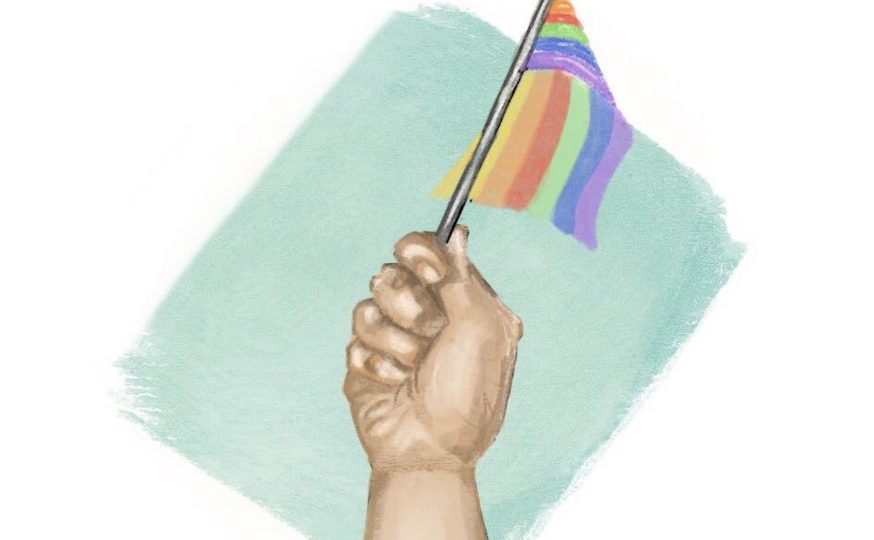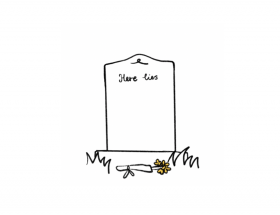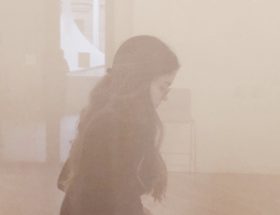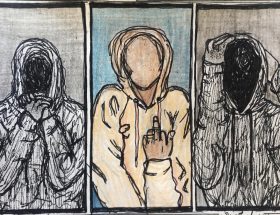On Queer erasure and farcical representation.
Love Simon is the gay blockbuster of the summer- or, for that matter, of the decade, due to a complete absence of competition. In fact, you may have noticed the dozens of headlines announcing it as a sign of changing times, or the constant murmur of top executives patting themselves on the back for placing a gay teenager on the big screen.
Except they never did.
Nick Robinson is a fine actor, an NYU graduate, and Seattle native. He is not, however, gay. The fact that the culmen of our community’s representation is Mr. Robinson reveals worrying aspects of how the industry treats LGBTQ characters.
The media’s attitude towards homosexuality can be viewed as split between those gay roles it grants basic personhood and those which it reduces to mere adrezzo gay-best-friend laughing stocks. Needless to say, the latter group is composed predominantly by large, high pitched males, who embody the archetypal effeminate gay man. Their traits and character arcs tend to be reduced to “diva” moments, in which the audience rewards the mocking of their mannerisms with hysterical laughter. They represent a sassy shoulder to cry on, a pile of quirky actions, epitomised perfectly by Mean Girls’ Damien piling up ham on his face. The character of Damien was at least played by a gay actor, Daniel Franzese, which made all the stereotype shovelling slightly less irritating. When a straight man plays the role, such as Eric Stonestreet as Modern family’s Cam-a character with a petty ego and inflated sense of self who sews a mermaid dress for his cat – it is hard not to be slightly taken aback by the constant references to what society views as gayness. Male femininity is acknowledged, but only to be used as a preposterous caricature.
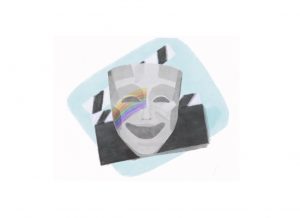
An alternative homosexuality, less vapid and superficial, is occasionally offered by the media. It features characters with layers of depth and intensity, free of any stigmatic stereotype. There is, however, a catch: all of them just so happen to be straight off-screen. Nick Robinson is one among dozens, including Heath Ledger, Jake Gyllenhaal, Tom Hanks, Matt Damon or Jared Leto. More recently, both the TV shows Riverdale and The Assassination of Gianni Versace featured straight males (Casey Cott in the former, Darren Criss and Finn Wittrock in the latter) in the role of complex gay men. Even the Norwegian hit show Skam, a niche media production which rose to fame largely because of its exploration of homosexuality, features straight males as gay men. The members of this new “straight-gay” generation reap the rewards of commercializing queer stories, without facing the weight of experiencing those stories themselves. Will Smith’s role in Six Degrees of Separation presents a poignant example, with Mr. Smith having allegedly refused to kiss a man when the scene required it for fears it would be detrimental to his career (a decision he now assures he regrets). Similarly, Sean Penn’s 2009 best actor Oscar win for portraying leading gay activist Harvey Milk is only made more bitterly ironic by the fact that said category has consistently eluded openly gay actors.
Some readers may wonder why the use of straight males to depict queerness should be a problem at all. In fact, most of society is insistent on adopting the opposite perspective, with interview questions rife with homophobic subtext- what was it like playing X character as a straight, woman-loving, not-gay-at-all man?- that herald the actors as brave progressive champions. Isn’t representation, whoever embodies it, good for the community? Shouldn’t we be glad that actors aren’t terrified at the prospect of having to depict a queer character?
The answer is complex. The LGBTQ community is unlike any other minority in the complete isolation that characterises its members. When one is differentiated by their race, they tend to have a family (if not a whole borough, thanks to pervasive residential segregation) who shares those distinctive traits, who can act as role models and provide reassurance of their validity and existence even when the Caucasian dominated media refuses to acknowledge them. Gayness, on the other hand, is idiosyncratically lonely, dominated by self-hatred and a fear of being caught. Representation of gay characters can be for some the first confirmation of their identity. When the actor is straight, this validation can be torn apart.
I distinctly recall looking up Connor Walsh after a few episodes of How to Get Away with Murder. He had it all: confidence, sex appeal, intelligence, complexity. The character gave me, for the first time, a gay role model. His sexuality did not dominate his identity, nor was it ignored, functioning instead as a relevant but not all-consuming part of a larger whole. My excitement was short-lived. A quick google search shattered my hopes: Mr Falahee, the actor, was very much straight. The complex gay male wasn’t gay after all, my role models once again reduced to ham-piled Damien.
This cycle repeats itself over and over, to the point where one no longer expects any admirable homosexual characters to be actual homosexuals themselves. The artificial worlds spawned by Hollywood tell us one should be proud of their sexuality and uniqueness; the cast behind those stories is unrepresentative and eager to reaffirm their heterosexuality. By the time I faced Game of Thrones’ Loras Tyrell, I was unfazed by the actor’s heterosexuality. I had been forced by society to accept that I would only find my sexuality on screen through ridiculous archetypes or “straight washed” characters. I had learnt that only heterosexual men, deposed of any femininity or slight mannerisms, can play complex gay characters- even when that means reducing the gay public’s connection to the role. There can be no middle ground, no compromise between vociferous diva and contemplative not-actually-gay male. In sum, we are told by our heteronormative culture that we are supposed to be straight males, and then faced with a presumably “liberal” media which portrays our gay role models as… straight males.
This phenomenon, the acceptance of “homosexuality” per se but not of the gender nonconformism that tends to be attached to it, is increasingly prevalent, including in some gay circles where the catchphrase “no femmes” remains depressingly pervasive. Our society is okay with two men making out, as long as they remain completely “manly” whilst doing so- homosexuals, just not “f*gs”. Indeed, members of the community who happen to be more feminine get the shorter end of the stick, with a media environment that depicts only non-flamboyant men as complex humans. In Call me by Your Name, for instance, the masculine tension between the two main characters is only diluted by the visit of a caricature-like older gay couple stuffed in flowery shirts that the young Elio despises. It is this fear of un-masculine men, of queerness, what leads to the rise in straight-gay actors, with the subsequent loss of valuable representation. It is also this fear what young gay youth may absorb, with the effeminacy that tends to be the utmost source of insecurity being erased from their own stories.
This isn’t to say that only gay males should play gay characters, or vice versa- indeed, having a straight Connor Walsh is infinitely more desirable than having no equivalent character at all, and I will never not love Call Me by Your Name. But when we cast straight actors as gay men we hurt the public and reduce the connection they feel to the role. Producers must find the great, openly gay actors out there -Ian McKellen, Brandon Flynn, Neil Patrick Harris- and cast them to tell gay stories in a truthful, queer manner. For a role model, look no further than Modern Family’s second gay character, a lawyer incarnated by Jesse Tyler Ferguson who presents queerness as an obvious, but not dominant, part of a more complex identity. If our society wants to advance towards truthful representation in a manner that benefits the LGBTQ community, this straight-gay generation must become rare and anecdotal, rather than the norm; an industry with fewer straight Cams and more gay Mitchells.
artwork by: Mafer Martinez

